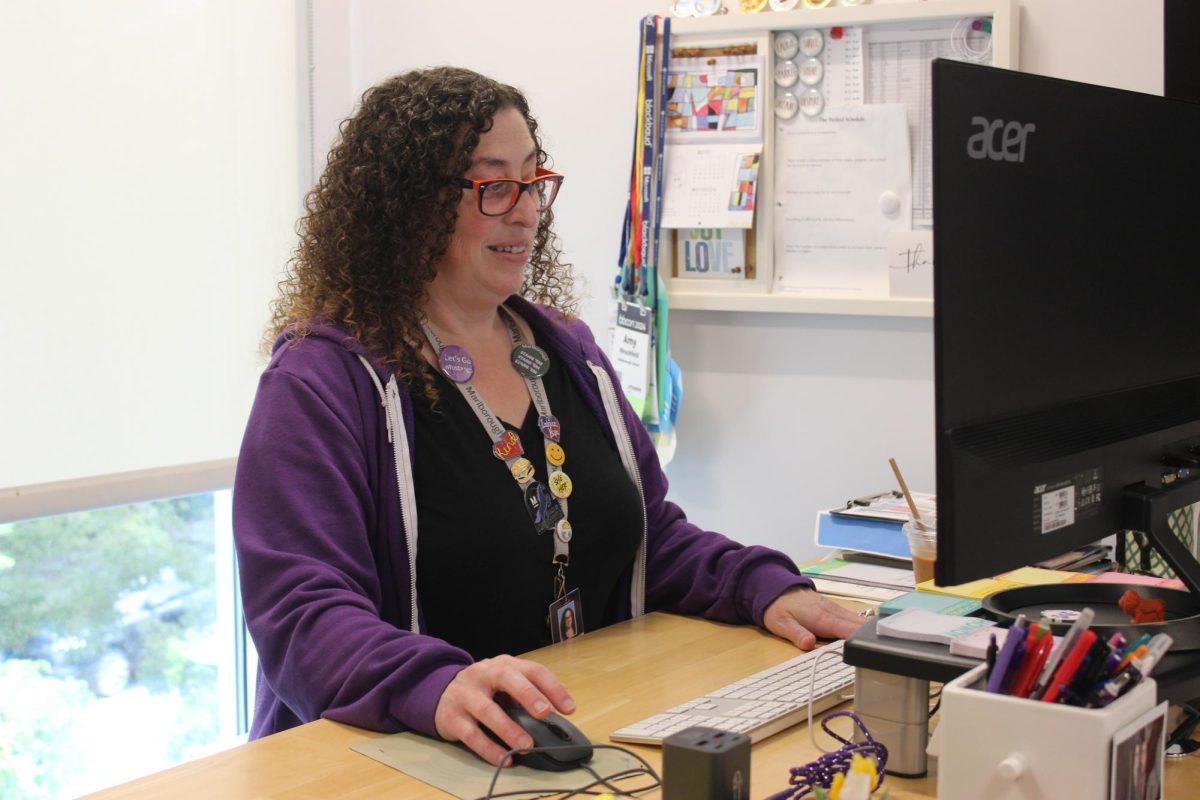
Zoe '27
Amy Hirschfeld organized students' schedules in her office
Creating Marlborough’s schedule involves multiple stages of planning, data collection and adjustments to meet the needs of both students and faculty that falls in the hands of Information Systems Administrator and Registrar Amy Hirschfeld. The process begins in February, when faculty meets to discuss what courses will be offered for the upcoming year. At this stage, department heads propose either the removal or the addition of new classes. In April, students receive their course recommendations that allow them to choose their classes for the next school year. The course request data is then uploaded into a computer system to create the schedules.
Head of Middle School Sean Fitts appreciates how Marlborough’s schedule adapts to the specific needs of students.
“The unique thing about Marlborough … is that we gather the data and then build the schedule, instead of having a schedule built and then having the students conform to that schedule,” Fitts said.
After the system has created the schedule, some manual adjustments are made to comply with the most student requests as possible. Specialty classes, such as Global Futures Institute (GFI), Robotics and Yearbook Production, typically only have one block per school year, making them difficult to schedule. “Singletons,” or courses that are not specialty classes but typically only have one block, include certain electives and core classes with less enrollment, like Mandarin Chinese and multivariable calculus. As the years have progressed, more specialty classes and “singletons” have been added to the course of study.
Hirschfeld, who is in charge of creating the schedules, explained how the increase in the “singletons” can make it challenging for the schedule to accommodate the course requests of students, causing students to have to decide between their passions.
“We have a lot of wonderful students who are very eager to do everything,” Hirschfeld said. “The complications come into play when we have students who are trying to do multiple things or follow multiple passions in which we only have one class running at a time.”
As a 7th-12th grade school, it is common for faculty to teach across both the Upper and Middle School divisions. Because of this, the schedule needs to be built in a way where some classes are available for Middle School teachers to teach in the Upper School, and vice versa. For example, during E and I periods, when middle schoolers have electives, it is common for Middle School teachers of the core subjects to teach classes to Upper School students.
“We have a certain number of teachers, we have a certain number of blocks, we have a certain number of classes … and there is only so much time in the day,” Hirschfeld said.
Upon viewing their schedules, many students request to change their classes around because of teacher preferences or a desire to balance their schedule differently, but it is often difficult to fulfill the requests of every student without impacting the schedules of others.
“There’s nothing more important than the school schedule. It’s what drives everything. Everything around Marlborough depends on the schedule,” Fitts said.